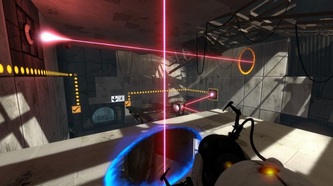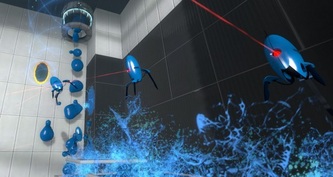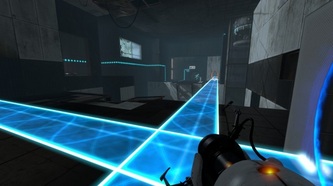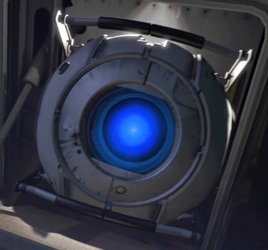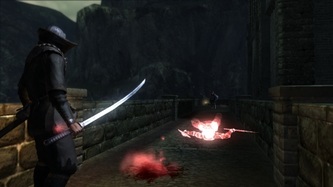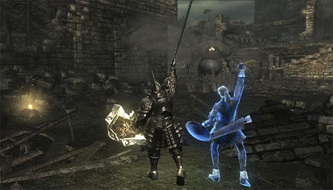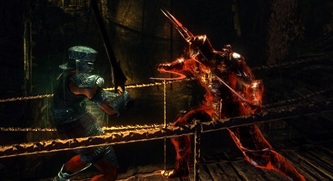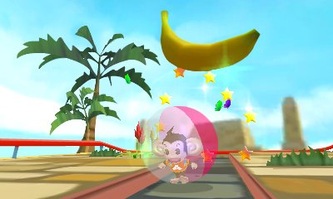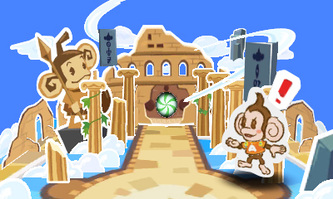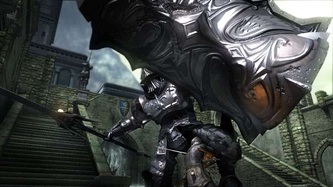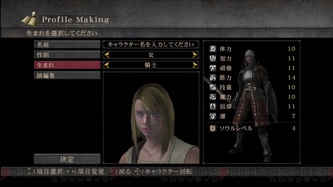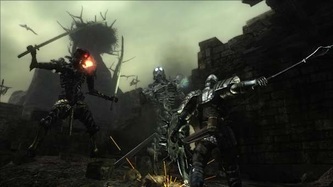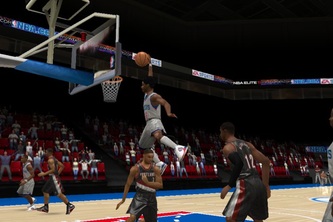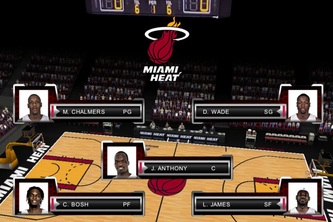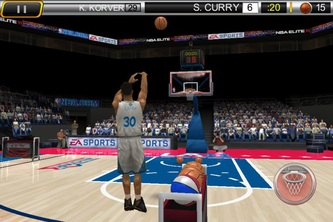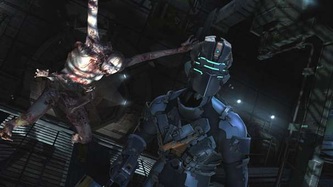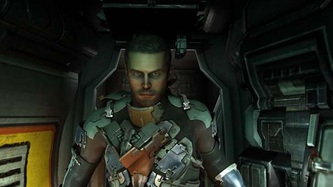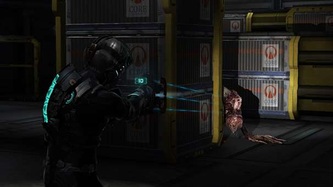GAMES
Are You Ready For The SEGAmaniacal Summer Challenge?
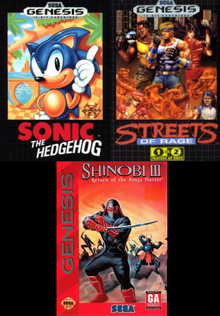
It’s time to start doing thumb push-ups, and getting your 16-bit self in shape, as the SEGAmaniacal Summer Challenge starts in a couple weeks.
Last year, we took 3 NES classics and played them during the summer months. This year, we’re giving the same love to SEGA’s 16-bit masterpiece of a console. Three months, three games, a summer of awesome.
First up in June is “Sonic the Hedgehog” (1991). The mascot of of the SEGA Genesis, Sonic’s blend of speed and platforming was like nothing that came before it. Despite the fact that the series has gone downhill over the years, the original is still amazing.
“Streets or Rage” (1991) will be punching players in the face during the month of July. The side-scrolling brawler let’s you take on the role of either Adam Hunter, Axel Stone or Blaze Fielding, three rogue cops trying to clean up the gang-ridden streets of the city.
Everyone knows that August is the month of the Ninja, and this year will be no different. “Shinobi III: Return of the Ninja Master” (1993) is a fitting game to round out this year's trilogy. It combines the platforming and brawling of our first two games, and adds in some ninja flavor to make a casserole of carnage.
All three of this year’s games can be found on “Sonic’s Ultimate Genesis Collection” for the PS3 and Xbox 360. You can also find some of them on Wii Virtual Console, Steam, or iPhone and iPad. And let’s not forget, you could dust off your old Genesis and play the original carts themselves. Either way, you have a couple of weeks to get your games before we kick things off in the first week of June.
Get ready!
Last year, we took 3 NES classics and played them during the summer months. This year, we’re giving the same love to SEGA’s 16-bit masterpiece of a console. Three months, three games, a summer of awesome.
First up in June is “Sonic the Hedgehog” (1991). The mascot of of the SEGA Genesis, Sonic’s blend of speed and platforming was like nothing that came before it. Despite the fact that the series has gone downhill over the years, the original is still amazing.
“Streets or Rage” (1991) will be punching players in the face during the month of July. The side-scrolling brawler let’s you take on the role of either Adam Hunter, Axel Stone or Blaze Fielding, three rogue cops trying to clean up the gang-ridden streets of the city.
Everyone knows that August is the month of the Ninja, and this year will be no different. “Shinobi III: Return of the Ninja Master” (1993) is a fitting game to round out this year's trilogy. It combines the platforming and brawling of our first two games, and adds in some ninja flavor to make a casserole of carnage.
All three of this year’s games can be found on “Sonic’s Ultimate Genesis Collection” for the PS3 and Xbox 360. You can also find some of them on Wii Virtual Console, Steam, or iPhone and iPad. And let’s not forget, you could dust off your old Genesis and play the original carts themselves. Either way, you have a couple of weeks to get your games before we kick things off in the first week of June.
Get ready!
5-9-11: Like Twin Peaks? You'll Love Deadly Premonition!
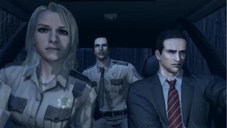
The Summer Watching project started last week, and we’re just getting into David Lynch’s surreal murder mystery, Twin Peaks. If you’ve enjoyed what you’ve seen so far, and you have an XBox 360, I HIGHLY recommend that you check out a game called Deadly Premonition.
The game is a flawed gem that while having terrible controls, has some of the most interesting characters you’ll meet in a game. The coolest thing about the game, though, is the fact that it’s patterned very closely after Twin Peaks. The lead character is Agent Francis York Morgan, and he is every bit the quirky, coffee-loving joy to behold as Twin Peaks’ Agent Dale Cooper.
I reviewed the game last year (you can find it in the 2010 archives page), but I may do an “In-Depth” series on it, as I plan to play through again while we watch Twin Peaks.
Oh, I almost forgot. The game is only $20 brand new, and you can grab it at GameStop or on Amazon.
The game is a flawed gem that while having terrible controls, has some of the most interesting characters you’ll meet in a game. The coolest thing about the game, though, is the fact that it’s patterned very closely after Twin Peaks. The lead character is Agent Francis York Morgan, and he is every bit the quirky, coffee-loving joy to behold as Twin Peaks’ Agent Dale Cooper.
I reviewed the game last year (you can find it in the 2010 archives page), but I may do an “In-Depth” series on it, as I plan to play through again while we watch Twin Peaks.
Oh, I almost forgot. The game is only $20 brand new, and you can grab it at GameStop or on Amazon.
5-1-11: Gameloft's 'Order & Chaos Online' Now Available for iPhone and iPad
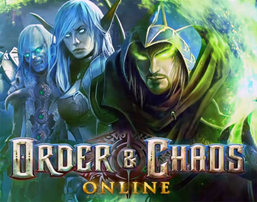
Gameloft has launched their new "World of Wracraft" clone for the iPhone and iPad, and it's pretty impressive.
"Order & Chaos Online" is currently priced at $6.99 which
includes a three-month subscription to the game. After that period of time, players have the option to renew their subscriptions for an affordable $0.99 for one month, $1.99 for three months or $2.99 for six months. In-app purchases are also available to enhance the gameplay.
According to Gameloft:
"The game allows players to battle as one of the virtuous Elves and Humans or one of the wild Orcs and Undead. "Order & Chaos Online" features over 500 quests, 600 enemies and 2,000 items in its first edition. Each future game update will deepen the experience. The game also offers an open 3D world that allows players to interact in real time, bringing the total MMORPG experience, previously only available on PC, to wireless devices worldwide."
In addition to the iPhone and iPad versions currently available, Gameloft will bring "Order & Chaos Online" to Android devices inthe near future.
You can get "Order & Chaos" online at the iTunes app store now by clicking here.
"Order & Chaos Online" is currently priced at $6.99 which
includes a three-month subscription to the game. After that period of time, players have the option to renew their subscriptions for an affordable $0.99 for one month, $1.99 for three months or $2.99 for six months. In-app purchases are also available to enhance the gameplay.
According to Gameloft:
"The game allows players to battle as one of the virtuous Elves and Humans or one of the wild Orcs and Undead. "Order & Chaos Online" features over 500 quests, 600 enemies and 2,000 items in its first edition. Each future game update will deepen the experience. The game also offers an open 3D world that allows players to interact in real time, bringing the total MMORPG experience, previously only available on PC, to wireless devices worldwide."
In addition to the iPhone and iPad versions currently available, Gameloft will bring "Order & Chaos Online" to Android devices inthe near future.
You can get "Order & Chaos" online at the iTunes app store now by clicking here.
4-26-11: Secret Identity Issue #330--Co-Op Critics: Mass Effect 1&2 Show Notes
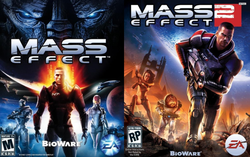
Hi All,
We just posted the latest issue of the podcast, and it's an episode dedicated to Bioware's Mass Effect series. Here are some helpful links to check out while you're listening to this one:
Mass Effect 1 Trailer
Brian’s Interview wtih Mass Effect writer Drew Kapyshyn
Brian’s Interview Mass Effect 2 writer Mac Walters and artist Omar Francia on ME: Redemption comic
Mass Effect 2 Trailer
Mass Effect 3 Trailer
For more on the Mass Effect series, head over to www.masseffect.com.
We just posted the latest issue of the podcast, and it's an episode dedicated to Bioware's Mass Effect series. Here are some helpful links to check out while you're listening to this one:
Mass Effect 1 Trailer
Brian’s Interview wtih Mass Effect writer Drew Kapyshyn
Brian’s Interview Mass Effect 2 writer Mac Walters and artist Omar Francia on ME: Redemption comic
Mass Effect 2 Trailer
Mass Effect 3 Trailer
For more on the Mass Effect series, head over to www.masseffect.com.
4-23-11: Portal 2 Single-Player Review (XBox 360)
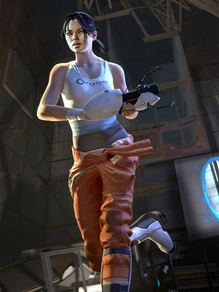
by Brian LeTendre
“Portal 2” is essentially two games in one, as it features distinct single-player and multiplayer campaigns, tied together by the game’s main storyline. Having just finished the single-player campaign, I figured I’d write up my thoughts on that and then come back with the multiplayer review later.
If you missed the phenomenon that was the original “Portal,” here’s the setup: “Portal” is a puzzle game where you play as a cloned test subject named Chell who is forced to solve a series of physics-based puzzles using a gun that can create portals.
The tests are designed by an insane AI named GLaDOS, the last remaining vestige of Aperture Science, a research corporation based in the Half-Life 2 universe. While the research facility had been long-abandoned, GLaDOS remained. As you make your way through the first game, you discover that GLaDOS’ plan was to kill you after you finished the tests. After defeating GLaDOS in the first game, Chell almost escaped the research facility, only to be dragged back and put into stasis, where she remains until the second game opens.
“Portal 2” sees Chell revived by another AI in the Aperture Science facility, a cyclopean orb named Wheatley. Wheatley is a bumbling doofus who inadvertently reactivates GLaDOS while trying to help Chell escape the research facility. Needless to say, GLaDOS is holding a grudge against Chell for trying to murder her in the first game, and plans on exacting her revenge by making Chell complete tests for the rest of her life. I won’t spoil any more than the setup of “Portal 2,” as the story is a brilliant continuation of the first game. In fact, “Portal 2” offers a much richer, deeper story than the original. You learn about the rise and fall of Aperture Science and it’s founder, Cave Johnson. You learn more about GLaDOS and her creation. And you get a much more “behind the scenes” look at the research facility and how it evolved both before and after the events of the first game.
In addition to the storyline, the characters in “Portal 2” are wonderful. The standout by far is Wheatley, who is voiced by the hysterical Stephen Merchant. His comedic timing, along with the superbly written dialog are a match made in heaven. Ellen McLain’s GLaDOS is also great, and I really enjoyed the way her relationship with Chell evolves over the game. J.K. Simmons as Aperture Science founder Cave Johnson is the icing on the cake, and all of the characters feel perfectly cast in their roles.
In keeping with the story and characters, “Portal 2’s” gameplay also has more depth than the original. The portal mechanic works just as it did in the first game, but some new elements have been added to the mix. A good chunk of the puzzles involve the use of “gels”-- colored liquids that have different physical properties like making you bounce or accelerating your speed.. By using the gels to strategically paint the environment of a puzzle, you can effectively change the environment to craft solutions to puzzles. There are also light bridges and ‘funnels’ which act as transportation tubes that can be directed through portals to produce a variety of effects. All in all the level of complexity in “Portal 2” is a big step up from the first game. Despite that, I never felt like the puzzles were unfair, and all of the solutions felt logical after I’d completed them.
“Portal 2’s” single player campaign is a very well-rounded and satisfying experience. The story, setting, characters and mechanics all come together to form a game that is a joy to play through from start to finish. I can’t wait to dive into the multiplayer campaign.
5 out of 5 Adventures in Science
“Portal 2” is essentially two games in one, as it features distinct single-player and multiplayer campaigns, tied together by the game’s main storyline. Having just finished the single-player campaign, I figured I’d write up my thoughts on that and then come back with the multiplayer review later.
If you missed the phenomenon that was the original “Portal,” here’s the setup: “Portal” is a puzzle game where you play as a cloned test subject named Chell who is forced to solve a series of physics-based puzzles using a gun that can create portals.
The tests are designed by an insane AI named GLaDOS, the last remaining vestige of Aperture Science, a research corporation based in the Half-Life 2 universe. While the research facility had been long-abandoned, GLaDOS remained. As you make your way through the first game, you discover that GLaDOS’ plan was to kill you after you finished the tests. After defeating GLaDOS in the first game, Chell almost escaped the research facility, only to be dragged back and put into stasis, where she remains until the second game opens.
“Portal 2” sees Chell revived by another AI in the Aperture Science facility, a cyclopean orb named Wheatley. Wheatley is a bumbling doofus who inadvertently reactivates GLaDOS while trying to help Chell escape the research facility. Needless to say, GLaDOS is holding a grudge against Chell for trying to murder her in the first game, and plans on exacting her revenge by making Chell complete tests for the rest of her life. I won’t spoil any more than the setup of “Portal 2,” as the story is a brilliant continuation of the first game. In fact, “Portal 2” offers a much richer, deeper story than the original. You learn about the rise and fall of Aperture Science and it’s founder, Cave Johnson. You learn more about GLaDOS and her creation. And you get a much more “behind the scenes” look at the research facility and how it evolved both before and after the events of the first game.
In addition to the storyline, the characters in “Portal 2” are wonderful. The standout by far is Wheatley, who is voiced by the hysterical Stephen Merchant. His comedic timing, along with the superbly written dialog are a match made in heaven. Ellen McLain’s GLaDOS is also great, and I really enjoyed the way her relationship with Chell evolves over the game. J.K. Simmons as Aperture Science founder Cave Johnson is the icing on the cake, and all of the characters feel perfectly cast in their roles.
In keeping with the story and characters, “Portal 2’s” gameplay also has more depth than the original. The portal mechanic works just as it did in the first game, but some new elements have been added to the mix. A good chunk of the puzzles involve the use of “gels”-- colored liquids that have different physical properties like making you bounce or accelerating your speed.. By using the gels to strategically paint the environment of a puzzle, you can effectively change the environment to craft solutions to puzzles. There are also light bridges and ‘funnels’ which act as transportation tubes that can be directed through portals to produce a variety of effects. All in all the level of complexity in “Portal 2” is a big step up from the first game. Despite that, I never felt like the puzzles were unfair, and all of the solutions felt logical after I’d completed them.
“Portal 2’s” single player campaign is a very well-rounded and satisfying experience. The story, setting, characters and mechanics all come together to form a game that is a joy to play through from start to finish. I can’t wait to dive into the multiplayer campaign.
5 out of 5 Adventures in Science
4-6-11: The In-Depth--Demon's Souls (Part 3 of 3)
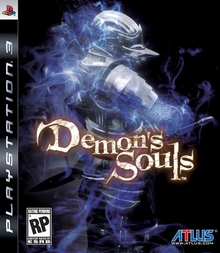
by Brian LeTendre
In my first two articles about my experience with Demon's Souls, I talked about the structure of the game in general, as well as the way it handles character advancement. But perhaps the most unique aspect of “Demon’s Souls” is the way the game approaches multiplayer. From the moment you start the game, you are online. As soon as I began exploring the first area of the game, I noticed there were glowing markings scrawled on the ground in a lot of different places. Upon further inspection, I learned that these markings are actually messages that were left by other people who are playing “Demon’s Souls.” Sometimes the message was a warning about an enemy lurking around the corner. Sometimes it was a hint that treasure lies ahead. And sometimes it was a plea for help from someone who was in trouble in their game. So the first layer of multiplayer in “Demon’s Souls” is the idea that you can leave messages for others, and they can leave them for you. Even better, you can rate other people’s messages, and a good rating actually helps heal that player in their own game. So that player looking for a little help? I might have saved his or her life by giving their message a good rating. You do have to exercise some caution however, as players can leave misleading messages, but almost all of the messages I’ve encountered have proven to be accurate.
Another layer of the multiplayer in “Demon’s Souls” is the ghostly visions of other players that populate your game. At any time, you’ll see an apparition of another player run around a corner and engage in battle with unseen enemies. You are literally seeing what’s happening in their game right at that moment. You’ll also see the ground littered with bloodstains throughout the game world. Examining a bloodstain shows you a ghostly vision of how that player died in battle. Both the apparitions and the bloodstains can be extremely helpful, as you often can find out what’s waiting for you and what strategy did or didn’t work by watching what other players have done. The great thing is, you can also ignore these, and even the occasional apparition running by you is never too distracting or intrusive. I loved it, as I could imagine all of the other worlds where players were battling through the same scenarios, and I felt a kinship to them.
While the first couple layers of “Demon’s Souls’” multiplayer are somewhat passive, the last layer is much more aggressive. In simple terms, other players can enter your game under certain conditions, and they don’t need an invite from you.
On the one hand, there is an invite system where you can invite other players into your game, and they can help you battle both regular enemies and bosses. You must be in Body form (full health) to summon others into your game, and you use a particular artifact (Blue Eye Stone) to do so. These players are referred to as Blue Phantoms. They get to keep the souls they acquire while helping you, and if they defeat a boss with you, they get revived and go back to their own game world.
The flipside of the invite system is the invade system, and it’s devious, frustrating and amazing at the same time. It boils down to this: when you are at your strongest (Body from), and you are in a level you have not yet beaten, it is possible for other players to invade your game and try to kill you. Let me say that again--OTHER PLAYERS CAN ENTER YOUR GAME AND TRY TO KILL YOU. These players are referred to as Black Phantoms. I have had three experiences with this system during my time with “Demon’s Souls,” and each of them was one of the most thrilling experiences I’ve ever had in a game.
My first experience with a player-controlled Black Phantom caught me completely off guard. I had just defeated a boss, which means I revived from my Soul from into my Body form (i.e. I got all of my health back). I had just started running down a long bridge into the next area, when all of a sudden a message started flashing on my screen: “Player X has invaded.” My heart almost stopped. I had no idea what that even meant, until I saw it--off in the distance, charging toward me, was a ghostly visage of a well-armored night racing toward me, it’s form outlined in blood-red.
I immediately panicked and ran back to the beginning of the level, trying to use the transportation stone to teleport back the safe zone. The message I got in response was terrifying--”Can’t return to Nexus while in multiplayer.” I felt like I was in a “Friday the 13th” movie--I was locked in this level with a homicidal maniac, whose only goal was to hunt me down and kill me. Resigned to my fate, I took a deep breath and decided I was going to go down swinging. I armed myself with the most powerful spell I had at my disposal, and then stepped out of the room I had ran into, facing the charging Phantom. When he got close enough, I fired off a spell--and hit him. I quickly fired another, and hit him again. And then something magical happened--I became the hunter, and he became the prey. He was clearly not prepared for a magic battle, and so he turned to run away. I bolted after him, firing spell after spell as I chased him. He tried to put some cover between us, but my character was much faster, and after a few more blasts, his character keeled over and then faded away, sent back to his own world. It was amazing. I had honestly never had an experience like that in all of my years gaming.
The second time someone invaded my game, it didn’t go so well. I had just defeated a particularly difficult enemy, and he dropped one of the rarer items in the game. right before I went over to pick it up, I got a flashing message that someone had invaded my game. I panicked, left the rare item on the ground, and started looking around for my new enemy. I was up on a ledge and the invader ran up to the area below me. This guy (or gal) had clearly done this before, as he started his attack by casting an ‘acid cloud’ spell that immediately broke all of my weapons and armor, rendering them much less effective. We then played cat and mouse for a while, before he finally cornered me and ran me off the side of a cliff. When I respawned back at the Nexus (the safe zone), I had to pay about 3,000 souls to have my armor repaired. Worse still, when I went back into the world I had been in, the a rare item I forgot to grab was gone, never to show up again.
My last confrontation with another player happened in a really cool way. At the end of one particular level (The Tower of Latria), the boss you face does not fight you himself--he summons an actual player into the game to face you for him. As you make your way through the final part of the level, you know the other player is waiting for you. Again, this is one of those experiences I’ve never had in a game. The anticipation/anxiety was palpable as I made my way to the area where I was to face my opponent. I thought I had prepared well, taking my experience from the previous two online encounters into this battle. I was wrong. The player I faced was faster than me, and my spellcaster with ranged attacks was no match for his dual axe-weilding melee character. I gave a good fight, but ultimately lost. When I made my way back again for another fight, I faced an NPC controlled by the game, presumably because there was no one online to summon at that point. I beat my opponent and moved on.
I can’t say enough about how effectively “Demon’s Souls” implements the online portion of the game. While you can avoid being invaded by remaining in Soul form (but sacrificing some of your health), you have to face another person at least one time, and that’s a good thing, as it’s an experience that should not be missed.
In closing, over the course of my 58 hours with the game, I came to love “Demon’s Souls.” It’s a shame that many were turned off by it’s excruciating difficulty, as there are so many things the game does that you won’t find anywhere else. It’s truly an achievement to complete the game, and one I will remember for a long time. I began my second playthrough almost immediately, as the game lets you carry over all the levels and gear you’ve amassed the first time through. Of course, the enemies are substantially more difficult the second time around, but what else would you expect from this game?
So, are you up for the challenge? If so, you just might run into me sometime...
In my first two articles about my experience with Demon's Souls, I talked about the structure of the game in general, as well as the way it handles character advancement. But perhaps the most unique aspect of “Demon’s Souls” is the way the game approaches multiplayer. From the moment you start the game, you are online. As soon as I began exploring the first area of the game, I noticed there were glowing markings scrawled on the ground in a lot of different places. Upon further inspection, I learned that these markings are actually messages that were left by other people who are playing “Demon’s Souls.” Sometimes the message was a warning about an enemy lurking around the corner. Sometimes it was a hint that treasure lies ahead. And sometimes it was a plea for help from someone who was in trouble in their game. So the first layer of multiplayer in “Demon’s Souls” is the idea that you can leave messages for others, and they can leave them for you. Even better, you can rate other people’s messages, and a good rating actually helps heal that player in their own game. So that player looking for a little help? I might have saved his or her life by giving their message a good rating. You do have to exercise some caution however, as players can leave misleading messages, but almost all of the messages I’ve encountered have proven to be accurate.
Another layer of the multiplayer in “Demon’s Souls” is the ghostly visions of other players that populate your game. At any time, you’ll see an apparition of another player run around a corner and engage in battle with unseen enemies. You are literally seeing what’s happening in their game right at that moment. You’ll also see the ground littered with bloodstains throughout the game world. Examining a bloodstain shows you a ghostly vision of how that player died in battle. Both the apparitions and the bloodstains can be extremely helpful, as you often can find out what’s waiting for you and what strategy did or didn’t work by watching what other players have done. The great thing is, you can also ignore these, and even the occasional apparition running by you is never too distracting or intrusive. I loved it, as I could imagine all of the other worlds where players were battling through the same scenarios, and I felt a kinship to them.
While the first couple layers of “Demon’s Souls’” multiplayer are somewhat passive, the last layer is much more aggressive. In simple terms, other players can enter your game under certain conditions, and they don’t need an invite from you.
On the one hand, there is an invite system where you can invite other players into your game, and they can help you battle both regular enemies and bosses. You must be in Body form (full health) to summon others into your game, and you use a particular artifact (Blue Eye Stone) to do so. These players are referred to as Blue Phantoms. They get to keep the souls they acquire while helping you, and if they defeat a boss with you, they get revived and go back to their own game world.
The flipside of the invite system is the invade system, and it’s devious, frustrating and amazing at the same time. It boils down to this: when you are at your strongest (Body from), and you are in a level you have not yet beaten, it is possible for other players to invade your game and try to kill you. Let me say that again--OTHER PLAYERS CAN ENTER YOUR GAME AND TRY TO KILL YOU. These players are referred to as Black Phantoms. I have had three experiences with this system during my time with “Demon’s Souls,” and each of them was one of the most thrilling experiences I’ve ever had in a game.
My first experience with a player-controlled Black Phantom caught me completely off guard. I had just defeated a boss, which means I revived from my Soul from into my Body form (i.e. I got all of my health back). I had just started running down a long bridge into the next area, when all of a sudden a message started flashing on my screen: “Player X has invaded.” My heart almost stopped. I had no idea what that even meant, until I saw it--off in the distance, charging toward me, was a ghostly visage of a well-armored night racing toward me, it’s form outlined in blood-red.
I immediately panicked and ran back to the beginning of the level, trying to use the transportation stone to teleport back the safe zone. The message I got in response was terrifying--”Can’t return to Nexus while in multiplayer.” I felt like I was in a “Friday the 13th” movie--I was locked in this level with a homicidal maniac, whose only goal was to hunt me down and kill me. Resigned to my fate, I took a deep breath and decided I was going to go down swinging. I armed myself with the most powerful spell I had at my disposal, and then stepped out of the room I had ran into, facing the charging Phantom. When he got close enough, I fired off a spell--and hit him. I quickly fired another, and hit him again. And then something magical happened--I became the hunter, and he became the prey. He was clearly not prepared for a magic battle, and so he turned to run away. I bolted after him, firing spell after spell as I chased him. He tried to put some cover between us, but my character was much faster, and after a few more blasts, his character keeled over and then faded away, sent back to his own world. It was amazing. I had honestly never had an experience like that in all of my years gaming.
The second time someone invaded my game, it didn’t go so well. I had just defeated a particularly difficult enemy, and he dropped one of the rarer items in the game. right before I went over to pick it up, I got a flashing message that someone had invaded my game. I panicked, left the rare item on the ground, and started looking around for my new enemy. I was up on a ledge and the invader ran up to the area below me. This guy (or gal) had clearly done this before, as he started his attack by casting an ‘acid cloud’ spell that immediately broke all of my weapons and armor, rendering them much less effective. We then played cat and mouse for a while, before he finally cornered me and ran me off the side of a cliff. When I respawned back at the Nexus (the safe zone), I had to pay about 3,000 souls to have my armor repaired. Worse still, when I went back into the world I had been in, the a rare item I forgot to grab was gone, never to show up again.
My last confrontation with another player happened in a really cool way. At the end of one particular level (The Tower of Latria), the boss you face does not fight you himself--he summons an actual player into the game to face you for him. As you make your way through the final part of the level, you know the other player is waiting for you. Again, this is one of those experiences I’ve never had in a game. The anticipation/anxiety was palpable as I made my way to the area where I was to face my opponent. I thought I had prepared well, taking my experience from the previous two online encounters into this battle. I was wrong. The player I faced was faster than me, and my spellcaster with ranged attacks was no match for his dual axe-weilding melee character. I gave a good fight, but ultimately lost. When I made my way back again for another fight, I faced an NPC controlled by the game, presumably because there was no one online to summon at that point. I beat my opponent and moved on.
I can’t say enough about how effectively “Demon’s Souls” implements the online portion of the game. While you can avoid being invaded by remaining in Soul form (but sacrificing some of your health), you have to face another person at least one time, and that’s a good thing, as it’s an experience that should not be missed.
In closing, over the course of my 58 hours with the game, I came to love “Demon’s Souls.” It’s a shame that many were turned off by it’s excruciating difficulty, as there are so many things the game does that you won’t find anywhere else. It’s truly an achievement to complete the game, and one I will remember for a long time. I began my second playthrough almost immediately, as the game lets you carry over all the levels and gear you’ve amassed the first time through. Of course, the enemies are substantially more difficult the second time around, but what else would you expect from this game?
So, are you up for the challenge? If so, you just might run into me sometime...
4-2-11: Review--Super Monkey Ball 3D (3DS)
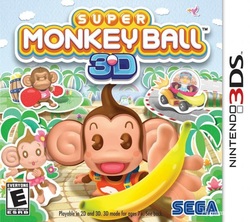
by Brian LeTendre
I’ve known about SEGA’s “Super Monkey Ball” series for years, but it wasn’t until I got the new “Super Monkey Ball 3D” (SMB 3D) that I really spent any time with the series. Turns out, I really like “Super Monkey Ball,” and “SMB 3D” is a solid launch title for Nintendo’s new 3D handheld.
The core mechanics of “SMB 3D” remind me of a cross between “Marble Madness” and those old wooden labyrinth games. Essentially, you help a monkey in a hamster ball navigate obstacle courses by tilting the course itself. Along the way, you pick up bonus points for collecting bananas and the occasional item that serves as a trophy. You can decide to control the game via the Circle Pad (the 3DS’ analog stick) or through motion control. Both ways work well enough, but if you want to experience the game in 3D, motion control is not really an option. Because you have to hold the 3DS in a stable position to view the 3D effects, tilting the unit to control the game distorts the visuals. If you use the Circle Pad, you’ll have no problem with the 3D, and that’s the way I played most of the game.
So, how about those 3D effects? They’re definitely cool, but they don’t actually affect the gameplay in a major way. Because the levels you navigate are suspended in space, there is a nice layer of depth that is added by the 3D. The opening cut scenes for each world play out like a pop-up book, and the effect looks good there as well. But, if you decide to shut the 3D off completely, you won’t be taking too much away from the experience.
The main game mode features 80 levels separated into eight themed worlds. The themes include everything from robot monkeys to quicksand-filled deserts, and obstacles in each level match the theme of the world. For example, a cloud-based world frequently has wind gusts blowing through levels that you have to account for, as they can change direction quickly and send you plummeting over the side of the level. All of the worlds and levels are colorful, have catchy music are are unique enough that you don’t feel like you’re doing the same thing over and over again. The experience is pretty short, however, and don’t be surprised if you can run through the whole thing in one sitting. It took me a little under three hours to complete all of the levels.
In addition to the main Monkey Ball mode, “SMB 3D” has two additional modes, and both will be familiar to Mario fans. A cart racing mode pits you against other “SMB” characters on different tracks taht are littered with power-ups that you can use to derail your competitors. The Monkey Fight mode is very much inspired by “Super Smash Bros.,” and has you battling other characters on multi-tiered levels to see who can collect the most bananas. While not necessarily unique, both modes are fun and should be even more so with a bunch of friends. I didn’t get to check out the game’s ad hoc or online multiplayer modes, simply because I’m the only one in my circle with a 3DS right now.
“Super Monkey Ball 3D” is a game whose whole is more than the sum of its parts. While the main game is fairly short, the additional modes as well as the collectible challenges offer plenty of reasons to keep playing. It’s also an excellent game for younger kids, as the subject matter is completely appropriate and the controls are easy to master. That alone makes “SMB 3D” a strong recommendation from me.
4 out of 5 Whimsical Adventures
I’ve known about SEGA’s “Super Monkey Ball” series for years, but it wasn’t until I got the new “Super Monkey Ball 3D” (SMB 3D) that I really spent any time with the series. Turns out, I really like “Super Monkey Ball,” and “SMB 3D” is a solid launch title for Nintendo’s new 3D handheld.
The core mechanics of “SMB 3D” remind me of a cross between “Marble Madness” and those old wooden labyrinth games. Essentially, you help a monkey in a hamster ball navigate obstacle courses by tilting the course itself. Along the way, you pick up bonus points for collecting bananas and the occasional item that serves as a trophy. You can decide to control the game via the Circle Pad (the 3DS’ analog stick) or through motion control. Both ways work well enough, but if you want to experience the game in 3D, motion control is not really an option. Because you have to hold the 3DS in a stable position to view the 3D effects, tilting the unit to control the game distorts the visuals. If you use the Circle Pad, you’ll have no problem with the 3D, and that’s the way I played most of the game.
So, how about those 3D effects? They’re definitely cool, but they don’t actually affect the gameplay in a major way. Because the levels you navigate are suspended in space, there is a nice layer of depth that is added by the 3D. The opening cut scenes for each world play out like a pop-up book, and the effect looks good there as well. But, if you decide to shut the 3D off completely, you won’t be taking too much away from the experience.
The main game mode features 80 levels separated into eight themed worlds. The themes include everything from robot monkeys to quicksand-filled deserts, and obstacles in each level match the theme of the world. For example, a cloud-based world frequently has wind gusts blowing through levels that you have to account for, as they can change direction quickly and send you plummeting over the side of the level. All of the worlds and levels are colorful, have catchy music are are unique enough that you don’t feel like you’re doing the same thing over and over again. The experience is pretty short, however, and don’t be surprised if you can run through the whole thing in one sitting. It took me a little under three hours to complete all of the levels.
In addition to the main Monkey Ball mode, “SMB 3D” has two additional modes, and both will be familiar to Mario fans. A cart racing mode pits you against other “SMB” characters on different tracks taht are littered with power-ups that you can use to derail your competitors. The Monkey Fight mode is very much inspired by “Super Smash Bros.,” and has you battling other characters on multi-tiered levels to see who can collect the most bananas. While not necessarily unique, both modes are fun and should be even more so with a bunch of friends. I didn’t get to check out the game’s ad hoc or online multiplayer modes, simply because I’m the only one in my circle with a 3DS right now.
“Super Monkey Ball 3D” is a game whose whole is more than the sum of its parts. While the main game is fairly short, the additional modes as well as the collectible challenges offer plenty of reasons to keep playing. It’s also an excellent game for younger kids, as the subject matter is completely appropriate and the controls are easy to master. That alone makes “SMB 3D” a strong recommendation from me.
4 out of 5 Whimsical Adventures
3-8-11: The In-Depth--Demon's Souls (Part 2 of 3)
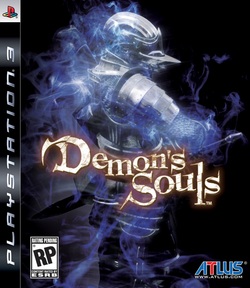
by Brian LeTendre
This is the second article in a three article series that’s taking a deeper look at one of the more underrated games of this console generation, “Demon’s Souls.” In the first article, I gave a basic overview of the game, it’s unforgiving nature, and the risk-reward theme that runs through it. This time around, I want to talk about the character and equipment upgrade system.
As I mentioned before, all of the character advancement and equipment upgrades in the game involve souls, which are the main currency.
When advancing your character’s attributes, you pay a certain amount of souls to advance a certain attribute by one point. Each time you buy a point, your level advances, so your overall level is a reflection of how many times you’ve advanced one of your character’s attributes. Choosing which attribute to advance is important for two reasons. First, each attribute affects multiple aspects of your character. So improving your Intelligence for example, affects the amount of magic you can cast, as well as how many spells you can remember at one time. Dexterity affects both your defense and your attack stats, and so on. The second reason each choice is important is that the cost for raising attributes goes up each time you advance. So, buying one point of Intelligence means that the next point you buy for any attribute will be more expensive. The cost of an attribute point quickly goes from hundreds of souls to thousands, to tens of thousands, and so on. Your first time through the game, you’ll never be able to significantly upgrade all of your stats, so you’ll likely want to decide early on how you want to advance your character. I leaned heavily toward a spellcasting build, so Magic and intelligence became my two most important stats. I am now level 45, and my character is a fairly powerful spellcaster that is good at attacking from a distance. This is a good thing, as I have really low health, and getting into a brawl with an enemy usually means a quick death for me.
Upgrading weapons is also tied to souls, but also requires you to have certain materials for whatever upgrade you’re trying to apply. There are different ores that can be found throughout the game, and each has properties that can be applied to weapons and/or shields. Basic materials are plentiful, so it’s fairly easy to initially upgrade weapons to give standard bonuses in combat. Rarer are the ores which provide magical bonuses, or elemental bonuses to weapons. For example, Moonstone will allow a weapon to give magical bonuses to attacks, but it can only be found on certain enemies and in certain areas of the game world. Much like character advancement, you need to figure out what your character’s style is, and then equip them with weapons that play to their strengths and offset their weaknesses. For example, my character has weapons that add bonuses based on my magic attribute score, which is my strongest stat.
More so than a lot of RPGs I’ve played, Demon’s Souls really forces you to heavily weigh your options when upgrading equipment and advancing your character. There is no way you will be able to really maximize more than a few stats and weapons during your first playthrough (unless you plan on grinding for hours and hours), so you really need to decide what type of character you want to play and stick with that theme.
In the next and final installment of this series, I’ll get into what I think is Demon’s Souls most unique aspect--it’s completely original approach to multiplayer.
This is the second article in a three article series that’s taking a deeper look at one of the more underrated games of this console generation, “Demon’s Souls.” In the first article, I gave a basic overview of the game, it’s unforgiving nature, and the risk-reward theme that runs through it. This time around, I want to talk about the character and equipment upgrade system.
As I mentioned before, all of the character advancement and equipment upgrades in the game involve souls, which are the main currency.
When advancing your character’s attributes, you pay a certain amount of souls to advance a certain attribute by one point. Each time you buy a point, your level advances, so your overall level is a reflection of how many times you’ve advanced one of your character’s attributes. Choosing which attribute to advance is important for two reasons. First, each attribute affects multiple aspects of your character. So improving your Intelligence for example, affects the amount of magic you can cast, as well as how many spells you can remember at one time. Dexterity affects both your defense and your attack stats, and so on. The second reason each choice is important is that the cost for raising attributes goes up each time you advance. So, buying one point of Intelligence means that the next point you buy for any attribute will be more expensive. The cost of an attribute point quickly goes from hundreds of souls to thousands, to tens of thousands, and so on. Your first time through the game, you’ll never be able to significantly upgrade all of your stats, so you’ll likely want to decide early on how you want to advance your character. I leaned heavily toward a spellcasting build, so Magic and intelligence became my two most important stats. I am now level 45, and my character is a fairly powerful spellcaster that is good at attacking from a distance. This is a good thing, as I have really low health, and getting into a brawl with an enemy usually means a quick death for me.
Upgrading weapons is also tied to souls, but also requires you to have certain materials for whatever upgrade you’re trying to apply. There are different ores that can be found throughout the game, and each has properties that can be applied to weapons and/or shields. Basic materials are plentiful, so it’s fairly easy to initially upgrade weapons to give standard bonuses in combat. Rarer are the ores which provide magical bonuses, or elemental bonuses to weapons. For example, Moonstone will allow a weapon to give magical bonuses to attacks, but it can only be found on certain enemies and in certain areas of the game world. Much like character advancement, you need to figure out what your character’s style is, and then equip them with weapons that play to their strengths and offset their weaknesses. For example, my character has weapons that add bonuses based on my magic attribute score, which is my strongest stat.
More so than a lot of RPGs I’ve played, Demon’s Souls really forces you to heavily weigh your options when upgrading equipment and advancing your character. There is no way you will be able to really maximize more than a few stats and weapons during your first playthrough (unless you plan on grinding for hours and hours), so you really need to decide what type of character you want to play and stick with that theme.
In the next and final installment of this series, I’ll get into what I think is Demon’s Souls most unique aspect--it’s completely original approach to multiplayer.
2-24-11: The In-Depth--Demon's Souls (Part 1 of 3)
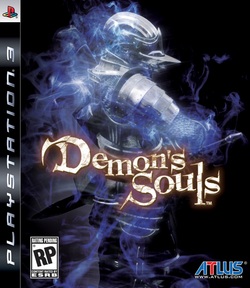
by Brian LeTendre
When “Demon’s Souls” was first released in late 2009, I grabbed it beacuse I had heard it was a challening and unique Japanese RPG. Upon playing the three or four hours of the game, I decided that it was way too chalenging for me, and I moved on to other games that were being released at the time.
Fast forward to early 2011. I’ve been hearing about how a sequel of sorts called “Dark Souls” will be published later this year, and it got me to thinking that I should give “Demon’s Souls” another look.
I’m glad I did, because “Demon’s Souls” is a fascinating game that draws me further and further in the more time I sepnd with it. In this series of articles, I’ll be talking about some of the different aspects of the game and why I find them so interesting. This first article will focus on the world of the game and the player’s introduction to it.
The story in “Demon’s Souls” is that the king of a fictional kingdom called Boletaria sought to increase his power and his kingdom’s prosperity by performing a dark ritual. The kingdom was very prosperous for a while, but the ritual awoke an ancient evil. Eventually a mysterious, dark fog began to envelop the kingdom, cutting it off from the rest of the world. With the fog came demons that feated on the souls of the living. Now the area is populated with demons and undead, and the few remaining survivors are pretty much crazy. Many heroes have ventured into the fog from the outside world and never returned. Now the fog is starting to spread outward. You start the game as a hero from the outside world who decides to enter the fog, hoping to defeat the evil at the source of it.
There’s a few great things about your introduction to the game. First of all, “Demon’s Souls” is gloomy, atmospheric and beautiful at the same time. The tutorial for the game does a great job of immersing you into the world, teaching you the basics, and introducing the harsh reality that you are going to die in this game--a lot. In fact, death is a central conept in this game. While you begin in your full, physical form (called Body form), upon dying you are revived in the Nexus. The Nexus is kind of a Limbo-like place that contains doorways into different parts of Boletaria. When you die, you return in Soul form, and as you are less than whole, you only have half of your overall health. There are only a few ways to return to your full Body form, and one of them is to defeat the demon bosses located in certain areas of Boletaria.
Like most RPGs, “Demon’s Souls” has an advancement system. You can improve your attributes, learn magic, level your character and upgrade your gear. Central to all of these things is acquiring the currency of the world--souls. Each time you defeat an enemy, you are rewarded with the souls that demon had taken. You use those souls to buy upgrades and advance your character.
Another aspect of “Demon’s Souls” harsh and unforgiving nature is the fact that each time you venture into the world, you risk losing the souls you’ve acquired. When you die, you are returned to the Nexus with zero souls. The only way to recover them is to go back to your point of death and recover your lost souls before you die again. If you die a second time, the souls are lost for good. It’s this aspect that usually drives people from the game the first time they lose thousands of souls that they were saving to upgrade their character. What’s itneresting about this aspect of the game is that it makes every trip into the world a gamble. Do I gather a few thousand souls and then run back to the Nexus to spend them? Or, do I venture into the next area hoping to collect more souls and maybe find a cool item? Adding to the gamble is the fact that enemies respawn when you return to the Nexus, so if you haven’t completed an area and killed the boss, you’ll be fighting everyone all over again to get back to the point you left off at. If you’ve died, you have to fight all those enemies again just to get back to your body and reclaim you lost souls--a daunting task.
This risk-reward concept is ever present, and when combined with the way the game immerses you in the world, it creates an underlying feeling of both fear and excitement. It can also create maddening frustration, which is more likely to happen when you are a low-level character for whom every encounter is potentially fatal.
“Demon’s Souls” is certainly not for the easily frustrated or faint of heart. My first experience with the game left me very frustrated, and I walked away from it for two years. This time through, I knew what I was getting into, and I apporached the game with a completely different mindset.
Next time around, I’ll get into character advancement and gear upgrade system. In the meantime, you can visit the game's official site here.
When “Demon’s Souls” was first released in late 2009, I grabbed it beacuse I had heard it was a challening and unique Japanese RPG. Upon playing the three or four hours of the game, I decided that it was way too chalenging for me, and I moved on to other games that were being released at the time.
Fast forward to early 2011. I’ve been hearing about how a sequel of sorts called “Dark Souls” will be published later this year, and it got me to thinking that I should give “Demon’s Souls” another look.
I’m glad I did, because “Demon’s Souls” is a fascinating game that draws me further and further in the more time I sepnd with it. In this series of articles, I’ll be talking about some of the different aspects of the game and why I find them so interesting. This first article will focus on the world of the game and the player’s introduction to it.
The story in “Demon’s Souls” is that the king of a fictional kingdom called Boletaria sought to increase his power and his kingdom’s prosperity by performing a dark ritual. The kingdom was very prosperous for a while, but the ritual awoke an ancient evil. Eventually a mysterious, dark fog began to envelop the kingdom, cutting it off from the rest of the world. With the fog came demons that feated on the souls of the living. Now the area is populated with demons and undead, and the few remaining survivors are pretty much crazy. Many heroes have ventured into the fog from the outside world and never returned. Now the fog is starting to spread outward. You start the game as a hero from the outside world who decides to enter the fog, hoping to defeat the evil at the source of it.
There’s a few great things about your introduction to the game. First of all, “Demon’s Souls” is gloomy, atmospheric and beautiful at the same time. The tutorial for the game does a great job of immersing you into the world, teaching you the basics, and introducing the harsh reality that you are going to die in this game--a lot. In fact, death is a central conept in this game. While you begin in your full, physical form (called Body form), upon dying you are revived in the Nexus. The Nexus is kind of a Limbo-like place that contains doorways into different parts of Boletaria. When you die, you return in Soul form, and as you are less than whole, you only have half of your overall health. There are only a few ways to return to your full Body form, and one of them is to defeat the demon bosses located in certain areas of Boletaria.
Like most RPGs, “Demon’s Souls” has an advancement system. You can improve your attributes, learn magic, level your character and upgrade your gear. Central to all of these things is acquiring the currency of the world--souls. Each time you defeat an enemy, you are rewarded with the souls that demon had taken. You use those souls to buy upgrades and advance your character.
Another aspect of “Demon’s Souls” harsh and unforgiving nature is the fact that each time you venture into the world, you risk losing the souls you’ve acquired. When you die, you are returned to the Nexus with zero souls. The only way to recover them is to go back to your point of death and recover your lost souls before you die again. If you die a second time, the souls are lost for good. It’s this aspect that usually drives people from the game the first time they lose thousands of souls that they were saving to upgrade their character. What’s itneresting about this aspect of the game is that it makes every trip into the world a gamble. Do I gather a few thousand souls and then run back to the Nexus to spend them? Or, do I venture into the next area hoping to collect more souls and maybe find a cool item? Adding to the gamble is the fact that enemies respawn when you return to the Nexus, so if you haven’t completed an area and killed the boss, you’ll be fighting everyone all over again to get back to the point you left off at. If you’ve died, you have to fight all those enemies again just to get back to your body and reclaim you lost souls--a daunting task.
This risk-reward concept is ever present, and when combined with the way the game immerses you in the world, it creates an underlying feeling of both fear and excitement. It can also create maddening frustration, which is more likely to happen when you are a low-level character for whom every encounter is potentially fatal.
“Demon’s Souls” is certainly not for the easily frustrated or faint of heart. My first experience with the game left me very frustrated, and I walked away from it for two years. This time through, I knew what I was getting into, and I apporached the game with a completely different mindset.
Next time around, I’ll get into character advancement and gear upgrade system. In the meantime, you can visit the game's official site here.
2-16-11: NBA Elite 11 Review (iPhone)
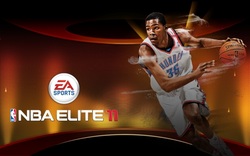
by Brian LeTendre
EA made a lot of headlines in late 2010 when they announced that “NBA Elite 11” for consoles was being canceled. What a lot of people (including me) didn’t realize however, was that there was a version of the game that did make it to market--the iPhone version.
I’m glad it did, because not only is “NBA Elite 11” a great iPhone game, it’s a great basketball game in general, and one of the best handheld games I’ve played in a while.
“NBA Elite 11” lets you play an exhibiton game, playoff series, full season or three-point contest with any of the 30 NBA teams. Controls are simple, consisting of a virtual d-pad on one side of the screen, and two buttons on the other side, used for passing and shooting, or blocking and defending. The d-pad is kind of a guideline, as you san press on any part of the screen to move players around. The buttons are semi-transparent, so they don’t obscure your view of the on-court action. The graphics are impressive, from the detailed arenas and courts, to the player models themselves. Some of the player animations are a little stiff, but overall the game is gorgeous.
Quarters are only a few minutes long, so a typical game goes by pretty quickly. It’s perfect for when you only have a short amount of time to play. You can also pick up games where you left off, so you don’t have to worry about completing a whole game every time you play.
All in all, “NBA Elite 11” is a fantastic iPhone game, and it’s deep enough that it might be the only basketball game you need to purchase this season. It’s well worth the $4.99 price. There’s even a free demo on iTunes, so there’s no reason not to check this one out.
4.5 out of 5 Buzzer Beaters
EA made a lot of headlines in late 2010 when they announced that “NBA Elite 11” for consoles was being canceled. What a lot of people (including me) didn’t realize however, was that there was a version of the game that did make it to market--the iPhone version.
I’m glad it did, because not only is “NBA Elite 11” a great iPhone game, it’s a great basketball game in general, and one of the best handheld games I’ve played in a while.
“NBA Elite 11” lets you play an exhibiton game, playoff series, full season or three-point contest with any of the 30 NBA teams. Controls are simple, consisting of a virtual d-pad on one side of the screen, and two buttons on the other side, used for passing and shooting, or blocking and defending. The d-pad is kind of a guideline, as you san press on any part of the screen to move players around. The buttons are semi-transparent, so they don’t obscure your view of the on-court action. The graphics are impressive, from the detailed arenas and courts, to the player models themselves. Some of the player animations are a little stiff, but overall the game is gorgeous.
Quarters are only a few minutes long, so a typical game goes by pretty quickly. It’s perfect for when you only have a short amount of time to play. You can also pick up games where you left off, so you don’t have to worry about completing a whole game every time you play.
All in all, “NBA Elite 11” is a fantastic iPhone game, and it’s deep enough that it might be the only basketball game you need to purchase this season. It’s well worth the $4.99 price. There’s even a free demo on iTunes, so there’s no reason not to check this one out.
4.5 out of 5 Buzzer Beaters
2-6-11: Review--Dead Space 2 (XBox 360)
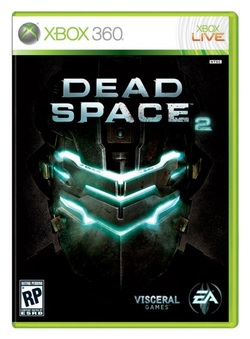
By Brian LeTendre
“Dead Space 2” is an almost perfect sequel. In a lot of ways its bigger and better than the original “Dead Space,” but some pacing and balance issues in the last act of the game tarnish what is otherwise a fantastic experience.
First, some backstory--in the alternate future of the Dead Space universe, once earth ran out of natural resources, mankind took to the stars to mine resources from other planets. During one of these mining operations, a mysterious monolith (called a Marker) was found that triggered madness in those who came near it. Worse, when that madness turned to violence, people who died came back as hideously twisted killing machines called Necromorphs. In the original “Dead Space” game, engineer Isaac Clarke responded to a distress signal from a mining ship to find that it had been overrun with Necromorphs, and Isaac barely survived the events that ensued.
Fast forward three years, and Isaac wakes up on the Sprawl, a gigantic space city on Jupiter’s moon Titan where a Necromorph outbreak has recently occurred. While battling hordes of Necromorphs, Issac tries to find out why the outbreak on Titan happened, what’s been going on while he was asleep, and how he is involved.
From a story standpoint, “Dead Space 2” really reveals a lot more information about the Dead Space universe. Isaac as a character has more depth (and a voice), new characters are introduced, and more details about the origins of the Marker and Necromorphs are revealed. The game also leaves a lot of questions out there, presumably for the next installment. “Dead Space 2” has a bit of a different tone than it’s predecessor as well. In the first game, the emphasis was on tension and scares, and the non-boss encounters were relatively small. “Dead Space 2” still has a lot of scares, but it’s more action-oriented, featuring bigger set pieces, bigger battles, and exponentially more enemies. From the moment the game begins, Isaac is thrust into the middle of chaos, and it never lets up. The first 30 minutes of “Dead Space 2” may be the best opening sequence I’ve experienced in a game.
Visually, “Dead Space 2” is fantastic. Aside from just being pretty, there is a variety to the visuals in “Dead Space 2” that wasn’t there in the first game. Because Isaac is in a city, the scope is much larger, and the game takes you from medical wards through residential areas, shopping centers, daycares and schools, and more. I was reminded quite a bit of Bioshock, and I spent a lot of time stopping and looking around to take it all in. There are times when you can look out a window across the entire city, and the sense of how huge it is really comes across. As in the previous game, the sound design is incredible, and I highly recommend playing with headphones so you can truly appreciate it.
The gameplay has all the same third-person shooter elements as the original, and the mechanics are largely unchanged. In addition to the plasma cutter, pulse rifle and other weapons from the first game, there are some great new weapons for Isaac to battle the Necromorphs with. My favorite was the javelin gun, which not only can impale enemies and drive them back, but can also electrocute them as a secondary ability. Another great new weapon is a tool that deploys proximity mines, which are great for creating defensive positions to battle waves of enemies from. There are enough weapons that you can really put together an array that fits your playstyle best. All of the weapons are upgradeable, and each has additional abilities taht are unlocked when they are fully upgraded. Isaac’s gear also gives him the ability to slow down enemies (Stasis) and manipulate objects in the environment (Kinesis), which adds another layer of strategy to every encounter.
As I mentioned before, Isaac frequently faces off againt large numbers of enemies, and those numbers grow as the game goes on. In fact, in the latter chapters of the game, some of the battles border on the ridiculous, and I died regularly slogging through the the last couple of hours. There is also a new enemy introduced late in the game that changes things pretty dramatically. For me, these things broke up the pace of the game that had been established over the first twelve hours or so, and it took something away from the last act, which I really enjoyed from a story standpoint. On the bright side, you can switch the game’s difficulty on the fly, so you do have a good measure of control over how difficult the last couple of hours are.
The issues I had with the last act of the game did not stop me from immediately beginning a second playthrough, as I wanted to experience the story all over again and pick up on anything I might have missed. The second playthrough (called New Game +) allows you to keep your gear and wealth from the first game, and there are new suits that you can only access your second time around.
“Dead Space 2” also features a competitive multiplayer mode, where you are either a member of the city’s security force, or one of the Necromorphs. Each of the multiplayer maps features an objective that one side is trying to complete, while the other side tries to stop them. The gameplay is fast and brutal, and the ability to level up and unlock new weapons, gear and abilites offers a reason to keep coming back. The multiplayer mode is a nice compliment to the single player campaign, although it’s not the reason I would recommned picking the game up for.
“Dead Space 2”is a fantastic game that in my opinion firmly establishes the franchise as this generation’s survival horror king. While it can be brutally difficult at times, “Dead Space 2” is a game that everone should experience, and I expect it to be on a lot of “Game of the Year” lists next December.
4.5 out of 5 Needles to the Eye
“Dead Space 2” is an almost perfect sequel. In a lot of ways its bigger and better than the original “Dead Space,” but some pacing and balance issues in the last act of the game tarnish what is otherwise a fantastic experience.
First, some backstory--in the alternate future of the Dead Space universe, once earth ran out of natural resources, mankind took to the stars to mine resources from other planets. During one of these mining operations, a mysterious monolith (called a Marker) was found that triggered madness in those who came near it. Worse, when that madness turned to violence, people who died came back as hideously twisted killing machines called Necromorphs. In the original “Dead Space” game, engineer Isaac Clarke responded to a distress signal from a mining ship to find that it had been overrun with Necromorphs, and Isaac barely survived the events that ensued.
Fast forward three years, and Isaac wakes up on the Sprawl, a gigantic space city on Jupiter’s moon Titan where a Necromorph outbreak has recently occurred. While battling hordes of Necromorphs, Issac tries to find out why the outbreak on Titan happened, what’s been going on while he was asleep, and how he is involved.
From a story standpoint, “Dead Space 2” really reveals a lot more information about the Dead Space universe. Isaac as a character has more depth (and a voice), new characters are introduced, and more details about the origins of the Marker and Necromorphs are revealed. The game also leaves a lot of questions out there, presumably for the next installment. “Dead Space 2” has a bit of a different tone than it’s predecessor as well. In the first game, the emphasis was on tension and scares, and the non-boss encounters were relatively small. “Dead Space 2” still has a lot of scares, but it’s more action-oriented, featuring bigger set pieces, bigger battles, and exponentially more enemies. From the moment the game begins, Isaac is thrust into the middle of chaos, and it never lets up. The first 30 minutes of “Dead Space 2” may be the best opening sequence I’ve experienced in a game.
Visually, “Dead Space 2” is fantastic. Aside from just being pretty, there is a variety to the visuals in “Dead Space 2” that wasn’t there in the first game. Because Isaac is in a city, the scope is much larger, and the game takes you from medical wards through residential areas, shopping centers, daycares and schools, and more. I was reminded quite a bit of Bioshock, and I spent a lot of time stopping and looking around to take it all in. There are times when you can look out a window across the entire city, and the sense of how huge it is really comes across. As in the previous game, the sound design is incredible, and I highly recommend playing with headphones so you can truly appreciate it.
The gameplay has all the same third-person shooter elements as the original, and the mechanics are largely unchanged. In addition to the plasma cutter, pulse rifle and other weapons from the first game, there are some great new weapons for Isaac to battle the Necromorphs with. My favorite was the javelin gun, which not only can impale enemies and drive them back, but can also electrocute them as a secondary ability. Another great new weapon is a tool that deploys proximity mines, which are great for creating defensive positions to battle waves of enemies from. There are enough weapons that you can really put together an array that fits your playstyle best. All of the weapons are upgradeable, and each has additional abilities taht are unlocked when they are fully upgraded. Isaac’s gear also gives him the ability to slow down enemies (Stasis) and manipulate objects in the environment (Kinesis), which adds another layer of strategy to every encounter.
As I mentioned before, Isaac frequently faces off againt large numbers of enemies, and those numbers grow as the game goes on. In fact, in the latter chapters of the game, some of the battles border on the ridiculous, and I died regularly slogging through the the last couple of hours. There is also a new enemy introduced late in the game that changes things pretty dramatically. For me, these things broke up the pace of the game that had been established over the first twelve hours or so, and it took something away from the last act, which I really enjoyed from a story standpoint. On the bright side, you can switch the game’s difficulty on the fly, so you do have a good measure of control over how difficult the last couple of hours are.
The issues I had with the last act of the game did not stop me from immediately beginning a second playthrough, as I wanted to experience the story all over again and pick up on anything I might have missed. The second playthrough (called New Game +) allows you to keep your gear and wealth from the first game, and there are new suits that you can only access your second time around.
“Dead Space 2” also features a competitive multiplayer mode, where you are either a member of the city’s security force, or one of the Necromorphs. Each of the multiplayer maps features an objective that one side is trying to complete, while the other side tries to stop them. The gameplay is fast and brutal, and the ability to level up and unlock new weapons, gear and abilites offers a reason to keep coming back. The multiplayer mode is a nice compliment to the single player campaign, although it’s not the reason I would recommned picking the game up for.
“Dead Space 2”is a fantastic game that in my opinion firmly establishes the franchise as this generation’s survival horror king. While it can be brutally difficult at times, “Dead Space 2” is a game that everone should experience, and I expect it to be on a lot of “Game of the Year” lists next December.
4.5 out of 5 Needles to the Eye
